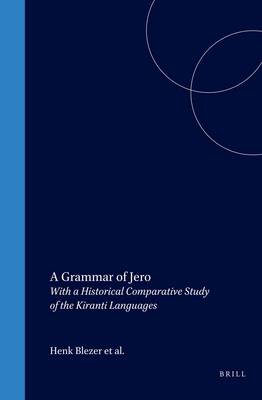
- Afhalen na 1 uur in een winkel met voorraad
- Gratis thuislevering in België vanaf € 30
- Ruim aanbod met 7 miljoen producten
- Afhalen na 1 uur in een winkel met voorraad
- Gratis thuislevering in België vanaf € 30
- Ruim aanbod met 7 miljoen producten
Zoeken
€ 283,95
+ 567 punten
Omschrijving
This description of the phonology, morphology and syntax of the endangered (Tibeto-Burman) Jero language as spoken in eastern Nepal, appears in sequel to the author's 2004 Grammar of Wambule, the language most closely related to Jero.
It pictures the complex-pronominalising language of the Jero Rai, one of the Kiranti tribes of eastern Nepal.
With a historical comparative study of the Kiranti languages, the branch of the Tibeto-Burman language family to which both Jero and Wambule belong. An exhaustive and model reference work for Tibeto-Burman linguistics, language typology and linguistic theory.
With financial support of the International Institute for Asian Studies (www.iias.nl).
It pictures the complex-pronominalising language of the Jero Rai, one of the Kiranti tribes of eastern Nepal.
With a historical comparative study of the Kiranti languages, the branch of the Tibeto-Burman language family to which both Jero and Wambule belong. An exhaustive and model reference work for Tibeto-Burman linguistics, language typology and linguistic theory.
With financial support of the International Institute for Asian Studies (www.iias.nl).
Specificaties
Betrokkenen
- Auteur(s):
- Uitgeverij:
Inhoud
- Aantal bladzijden:
- 432
- Taal:
- Engels
- Reeks:
- Reeksnummer:
- nr. 5
Eigenschappen
- Productcode (EAN):
- 9789004145054
- Verschijningsdatum:
- 15/04/2005
- Uitvoering:
- Hardcover
- Formaat:
- Genaaid
- Afmetingen:
- 162 mm x 240 mm
- Gewicht:
- 898 g

Alleen bij Standaard Boekhandel
+ 567 punten op je klantenkaart van Standaard Boekhandel
Beoordelingen
We publiceren alleen reviews die voldoen aan de voorwaarden voor reviews. Bekijk onze voorwaarden voor reviews.








